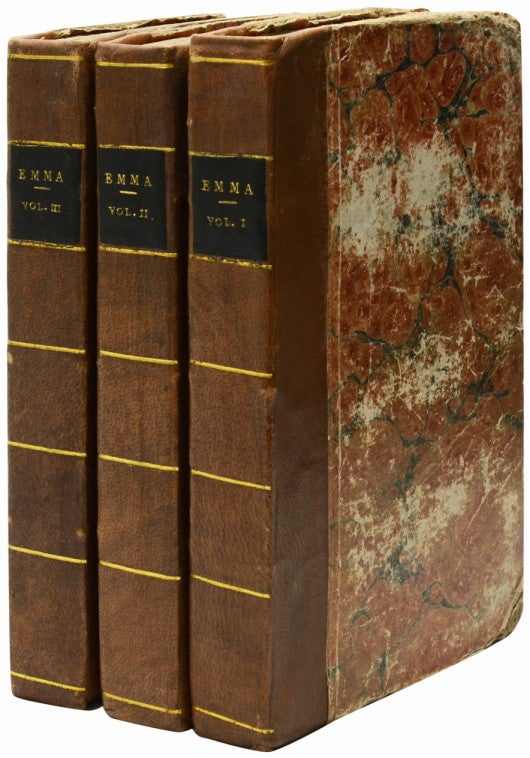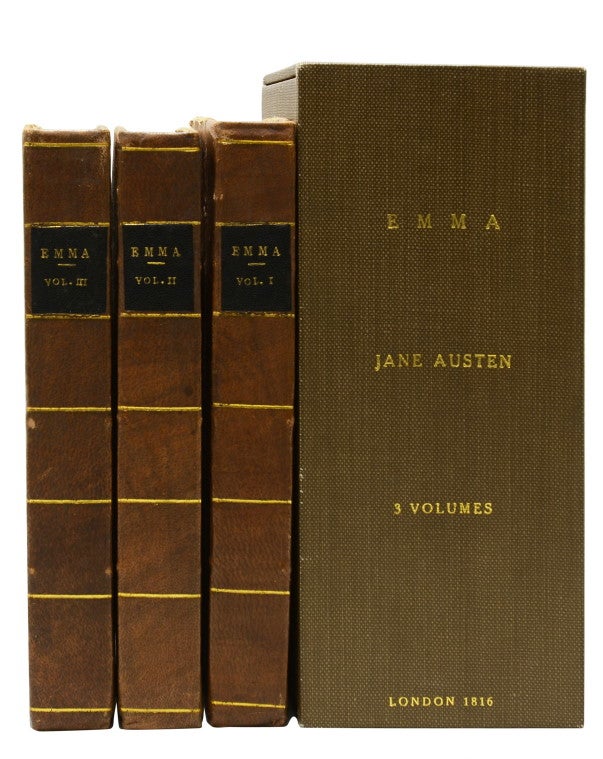EMMA
London: John Murray, 1816.


EMMA
London: John Murray, 1816. First edition. A lovely, uncut copy of Austen’s fourth novel. Complete with all three half-titles, the one from volume one tipped in before the title page, and with the advertisement at the end of volume three. Keynes notes that “the collation of the first volume ... is peculiar in that the first sheet consisted only of the title-page and the dedication to the Prince Regent, while the half-title was printed on the last leaf, which would otherwise have been blank.” Copies regularly offered as “complete” without the half-title in volume one, are anything but.
Three 12mo volumes (pages 187 x 110 mm), collating: [vi (with half-title)], 322; [iv], 351, [1 (printer’s imprint)]; [iv], 363, [1 (advertisement)]. A complete, uncut copy in contemporary marbled boards, rebacked in calf with black morocco spine labels. Nitpicking every flaw: boards rubbed and worn, particularly at the corners, a few pencil marks highlighting passages and annotations at the end of volume two, occasional light browning and foxing to leaves, a pinpoint hole and small smudge on the title page to volume one, small marginal chips or tear to the following leaves (no text affected) E1 in volume one and F3, F4, H2, L2 and L4 in volume 2. Withal an honest, excellent set protected in a custom clamshell case.
Austen’s first novel to feature a financially-independent young woman as protagonist, “Emma Woodhouse.” Most of the “action” in the novel is Emma’s meddlesome match-making, often biased by class or social relationships. A romantic comedy where Emma’s blind conviction often leads to egregious blunders she must work to overcome. Simple in theme, the novel brims with all the wit and charm that make Austen’s novels timeless.
Anna Eliza Bray’s copy, with her ink signature on the half-title in volume one. Bray (1790 – 1883) was a British novelist of some note, with her work spanning 1820 – 1874. She pioneered female authorship in historiography, a field that had traditionally been dominated by men. Prolific in her day, Bray’s work is beginning to attract renewed interest from the academic community. A distinguished provenance.
Gilson A8; Keynes 8; Sadleir I, 62d. (Item #785)

